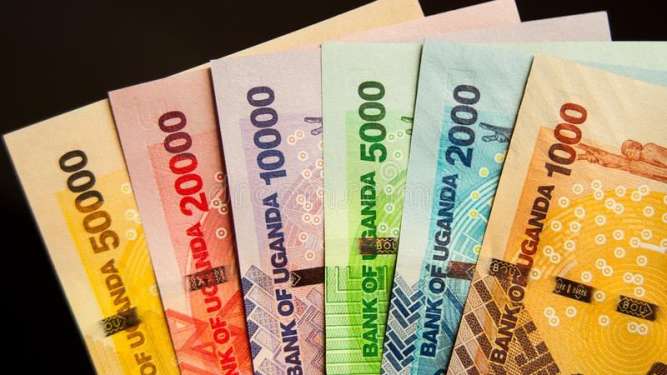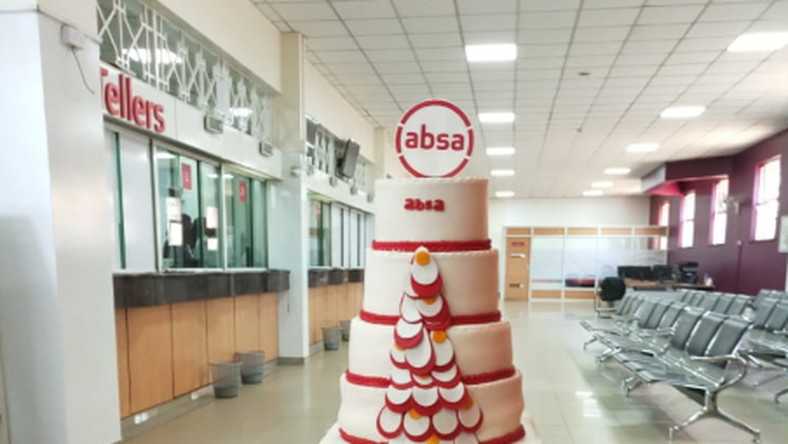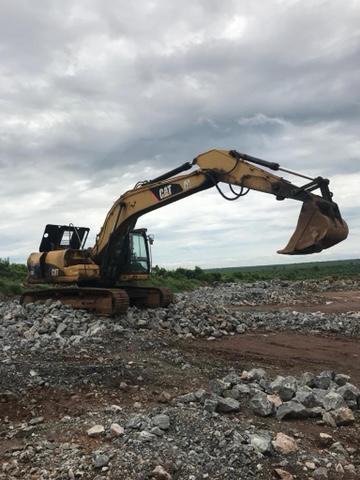- Africa’s new dawn: the rising role of digital and AI in agriculture
- Can Dangote Refinery Transform Africa Energy Ambition
- Gallup Survey: 80 per cent of Kenyan Workers Are Disengaged and Seek New Opportunities
- Madagascar Man Freed from 5KG Tumor After 15-Year Struggle
- How women in Africa are perceived and treated
- Sugar consumption in Kenya to Increase to 1.23 Million Tonnes
- Can Somalia and Turkey Oil deal Bring Change in Somaliland
- Remittances to Kenya dropped to $371.6 million in June, marking a six month low
Browsing: Central Bank of Kenya
East African countries have had a tough balancing act in 2020 as the Covid-19 situation oscillated from good to bad over and over again. This is reminiscent of the global situation where central banks have been forced to use high-level tuning and juggling to ensure their currencies don’t fall beyond repair. Even the US dollar, the main international currency has suffered repeatedly with Chinese Yuan and Euro pushing it against the wall.
In East Africa, a tough monetary policy by the central banks has seen currencies remain stable though with significant losses. Kenya for example, has seen its shilling lose ground to the dollar by almost seven points. The Rwandan franc and Tanzanian shilling have survived the wave while the South Sudan pound has been hit hard.
The East African region is primarily a traditional shilling zone that was introduced by the British rulers and used in Kenya, Uganda, Tanzania, …
In Africa’s metropolises, you don’t have to be rich to wear Gucci Armani or Prada, no sir, it is common place to see women in the slums carrying Dolce Gabbana handbags.
In fact there is a prominent saying across most all of Africa’s urban centres like Dar es Salaam and Nairobi “…everyone looks good in mtumba.”
Mtumba, is Swahili slang for second hand clothes, and Africa is one of the world’s leading importers of second hands, from caps, t-shirts and shirts, to pants and shorts all the way to bras and women underwear, yes second hand bras and underway are big business.
‘East Africa imported $151 million worth of used clothes and shoes in 2015, mostly from Europe and the U.S.’ And ‘At least 70 percent of donated garments end up in Africa’ – Oxfam.
What is strange here is that, Africa does not want to import these used items …
Kenya is heavily in debt; granted it is not the only East African country to find itself neck deep in debt but it certainly is the only one trying to raise the debt ceiling, every subsequent administration.
Last year, President Kenyatta appointed a new economist to lead the country’s National Treasury and just like his predecessor, his first order of business was to seek constitutional amendment so that the country could borrow more.
As of October 2019, Kenya’s legislators had been swayed to raise the country’s debt ceiling to USD 84.5 billion (Sh9 trillion). All is good when the money is flowing in, but when the roosters come home to roost and the cash flow takes an outward projector, the weight of it all starts to sink in.
That is where Kenya has found itself—smack in the middle of paying a whopping USD8.5 billion (Sh904.7 billion) in debt servicing. Even …
Once upon a time in Kenya, tea and coffee were the big players, the rulers of the country’s agribusiness the top foreign exchange earners.
However with time passing the crops contribution to annual earnings kept falling, because the farmers were simply not getting paid in time. The peasants’ payment was little and delayed.
As a result, production and quality of the coffee and tea out remained poor and could not earn the country its potential income from the sector.
Now the government has set aside USD15 million to revitalize the sector. The funding is from the World Bank which is meant to compliment another USD30 million that Kenya set aside back in January.
What is to be learnt here is not just the will to revitalize the coffee and tea sectors but also the willingness to admit what the problem was in the first place, slow and low payment of …
Central Bank of Kenya has cracked the whip against the Absa Bank in Kenya for failure to conduct proper tracing of the source of money in a flagged transaction in March 2020. Consequently, the regulator has slapped the bank with a week- from Thursday, April 9 to Wednesday, April 15, 2020- suspension from trading in forex.
In a statement, CBK notes that this failure contravenes anti-money laundering regulations which stipulates adherence to the proper tracing of funds passing through the bank.
A statement by CBK reads, “In investigating these and other earlier transactions it is evident that Absa Kenya did not have a satisfactory assurance of the underlying commercial transactions supporting these trades, as is required, nor did the bank ensure the standard checks on anti-money laundering and combating the financing of terrorism (AML/CFT) and know-your-customer (KYC) requirements were applied.”
Kenya has been keen to contain the flow of illicit …
 The construction industry in Tanzania contributed an average of 13.6% to Tanzania’s GDP over the last two years representing a whopping USD6billion.
The construction industry in Tanzania contributed an average of 13.6% to Tanzania’s GDP over the last two years representing a whopping USD6billion.
The government of Tanzania has dedicated more than a quarter (25.4%) of its annual national budget to infrastructure development projects. With such high stakes, the construction sector now offers new investment and employment opportunities for Tanzanian youth.
Meet Michael Kimei, the 33 year old young entrepreneur and born again Christian. Mr. Kimei is Owner and Manager of Aggregate Crushing Ltd, a construction company in Tanzania, the epitome of youth self employment.
“I have had passion for business ever since I was a child, and as a God fearing man and a firm believer of the gospel of Jesus Christ, my work is centered around living a God ordained life and putting hard work towards setting up my own business and taking it to golden heights for the glory …
Micro financing is the go to solution for small businesses as banks tighten lending conditions to stifle Non Performing Loans (NPLs). In Tanzania, as elsewhere, NPLs are no longer a problem for individual banks, rather a national economic problem managed by the Central Bank.
The Bank of Tanzania (BoT) now provides guidelines for banks to curb NPLs and to help, it has created what is referred to as Credit Reference Bureaus. These bureaus are meant to protect banks against bad credit or more directly, to protect them against bad debtors.
In Tanzania, there are now two credit reference bureaus both meant to protect banks from crippling NPLs. Rather than deal with recovery of bad loans, the bureaus are meant to keep banks from lending to potentially ‘bad debtors.’
Unchecked NPLs could bring a bank to closure, that means affecting all other bank customers, now multiply that across several banks and …
In the backdrop of Tanzania’s Central Bank announcing a stimulus package for commercial banks, loans advanced by banks have shot up significantly over the last year and the stimulus package is expected to sustain if not increase lending.
The Central Bank, the Bank of Tanzania (BoT) has this week released its Consolidated Zonal Economic Performance Report which shows lending by commercial banks have increased considerably in the last year.
The report shows that the highest amount of growth in bank loans was parallel to ongoing national infrastructure development works. The highest increase in loans was to companies operating in the central and south eastern zones owing to increased construction projects and to trading activities, respectively.
This would explain reduced lending in the commercial capital of Dar es Salaam. Lending in the bustling port city actually fell 1.6 percent compared to the same period last year. However, despite the percentage decrease, …
There are now more than 100,000 mini-grid stations across Africa, these little power generation stations are serving to bridge Africa’s rural power gap and Tanzania is no exception.
While the country leads Africa in rural electrification efforts, there is still huge gap between demand and supply and the solution to cover it lays in mini-grids, small power stations that generate power at localized remote points.
To date, Tanzania has well over 100 mini-grids that provide electrical power to over 250,000 people in remote corners of the country. These mini-grids provide close to 200 MW using biomass, fossil fuel and solar systems as well as hybrids of these energy sources.
Tanzania’s national policies also support adoption of renewable energy technologies. Off-grid electrification using renewable energy technologies can offer a power solution to rural and remote areas. These efforts are inline with the global Sustainable Development Goals.
SDG number 7 calls for …
More than ever before, Tanzania and the rest of Africa need to employ rain harvesting technology. Global climate changing is drastically affecting weather patterns, rains are heavier or missing completely, droughts in otherwise tropical areas, cyclones and tornadoes ravaging through coastlines. Weather is now less predictable than ever before.
For both economic and social reasons, Tanzania needs to make the best of the rains when they come, Tanzania needs to harvest rain water.
While at national or even city levels, there are some sophisticated equations involved in rain harvesting, like building reservoirs and purification sites, but all in all, the science of rain harvesting technology is not all that complicated at all. It’s a simple three step investment, collect, store and purify.
Since economies rely on water for production and households depend on clean and safe water for daily survivor, harvesting rain water should not even be optional, it should …













